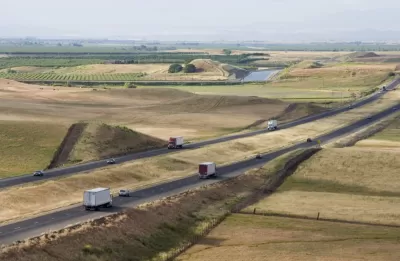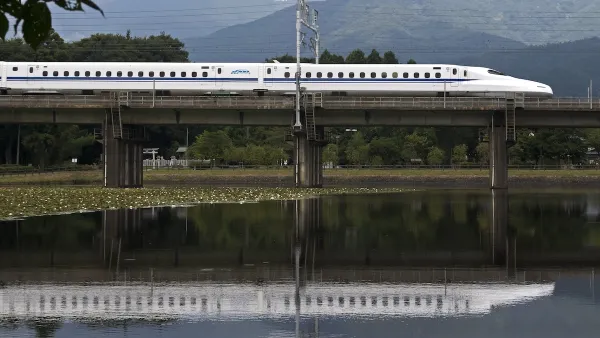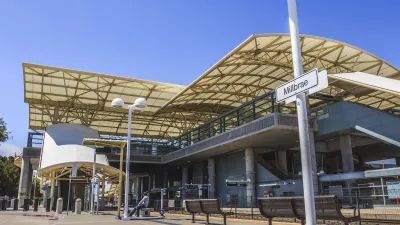The cost increases and delays on the Central Valley project have some state lawmakers wondering whether funds should go toward local transit systems instead.

"Thirteen years since California voters approved $10 billion to build a bullet train," writes Marissa Garcia, "Democrats who run the state government are divided over spending the money to finish building the first section of track — a 119-mile stretch in the Central Valley."
Some wonder whether the funds would be better spent expanding urban transit in more heavily populated regions. Ethan Elkind, director of the climate program at the UC Berkeley School of Law, says starting the project in the Central Valley was unusual. "Typically what you’d see with projects like this is they’d start where the people are at and then radiate outwards. So, we would have started building high-speed rail in the San Francisco Bay Area, down in LA, and then eventually connect it," Elkind told CalMatters.
"The Newsom administration, however, praises high-speed rail as a job creator in the economically-struggling Central Valley." But "[k]ey lawmakers, especially in the Assembly, say they don’t see the benefit for their Southern California constituents. And even if the bullet train eventually reaches Los Angeles and San Francisco, some legislators are skeptical that car-centric Californians will become train riders without more exposure to public transit in their daily lives."
Assembly Transportation Committee chairperson Laura Friedman questioned the value of spending additional billions on the Central Valley train. "With a quarter of California’s population living in Los Angeles County, Friedman would like to see money spent on improving Union Station in Los Angeles, the Metrolink commuter rail and transit between the San Fernando Valley and LA’s Westside." She argues that "better local service will boost support for trains, eventually restoring voters’ favor for high-speed rail."
"A poll funded by the Assembly Democrats found that Californians are evenly split between killing high-speed rail or continuing it, but that support for the project is far higher among Democrats, the San Francisco Chronicle reported."
FULL STORY: Bullet train budget battle: Should California spend more on urban transit, not high-speed rail?

Maui's Vacation Rental Debate Turns Ugly
Verbal attacks, misinformation campaigns and fistfights plague a high-stakes debate to convert thousands of vacation rentals into long-term housing.

Planetizen Federal Action Tracker
A weekly monitor of how Trump’s orders and actions are impacting planners and planning in America.

In Urban Planning, AI Prompting Could be the New Design Thinking
Creativity has long been key to great urban design. What if we see AI as our new creative partner?

King County Supportive Housing Program Offers Hope for Unhoused Residents
The county is taking a ‘Housing First’ approach that prioritizes getting people into housing, then offering wraparound supportive services.

Researchers Use AI to Get Clearer Picture of US Housing
Analysts are using artificial intelligence to supercharge their research by allowing them to comb through data faster. Though these AI tools can be error prone, they save time and housing researchers are optimistic about the future.

Making Shared Micromobility More Inclusive
Cities and shared mobility system operators can do more to include people with disabilities in planning and operations, per a new report.
Urban Design for Planners 1: Software Tools
This six-course series explores essential urban design concepts using open source software and equips planners with the tools they need to participate fully in the urban design process.
Planning for Universal Design
Learn the tools for implementing Universal Design in planning regulations.
planning NEXT
Appalachian Highlands Housing Partners
Mpact (founded as Rail~Volution)
City of Camden Redevelopment Agency
City of Astoria
City of Portland
City of Laramie





























